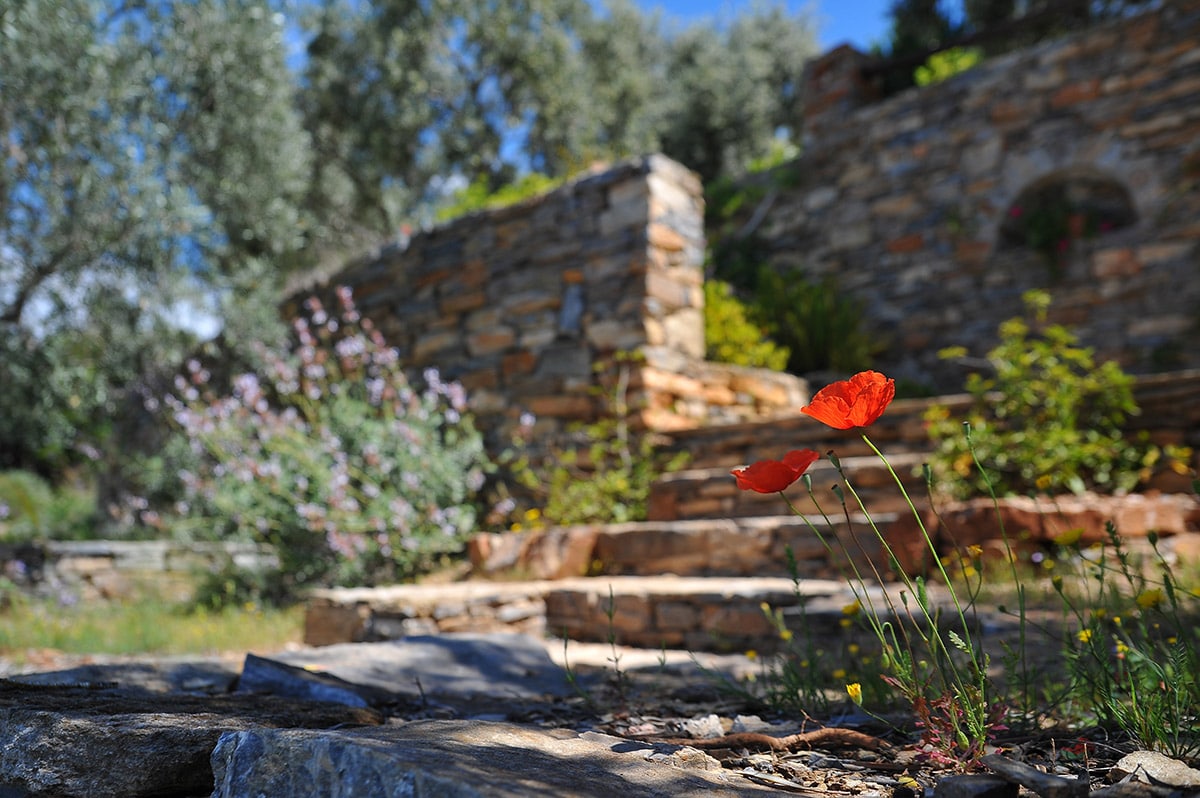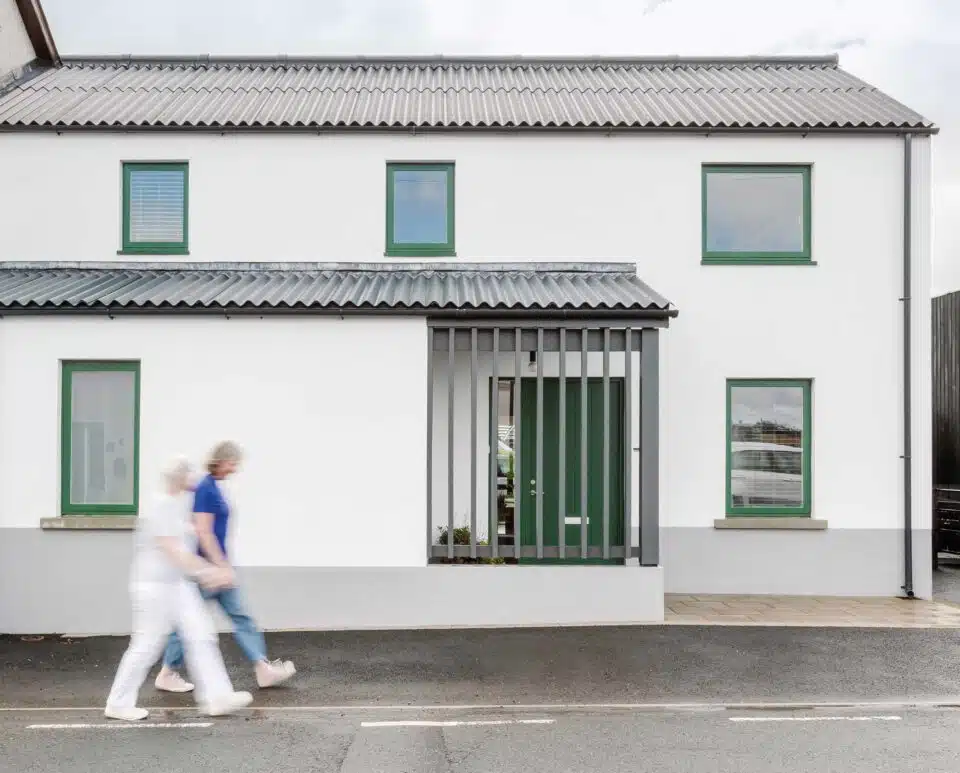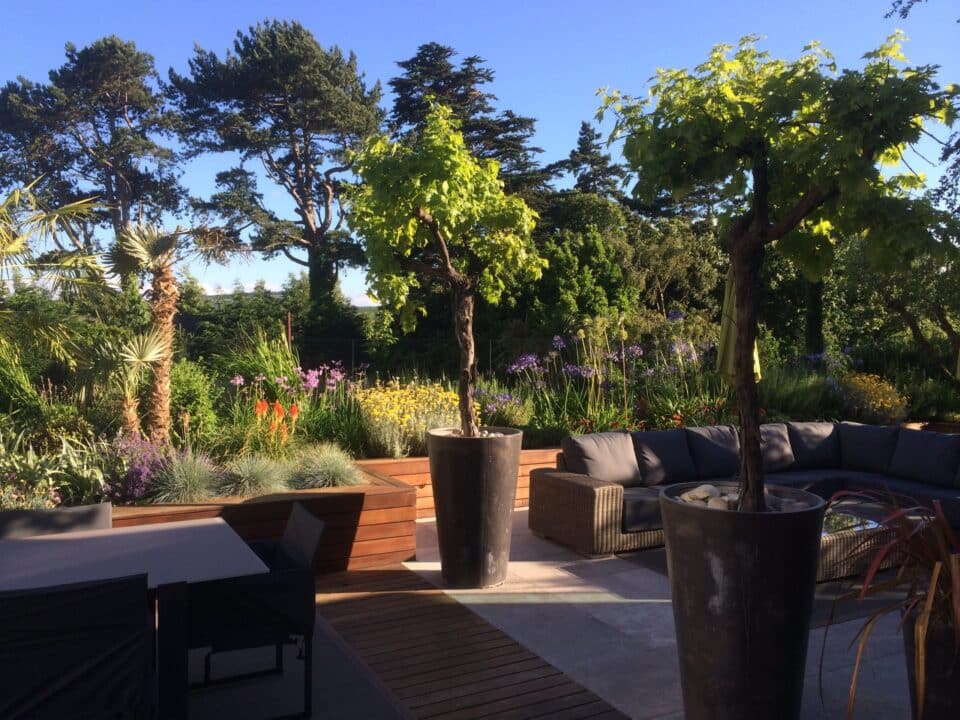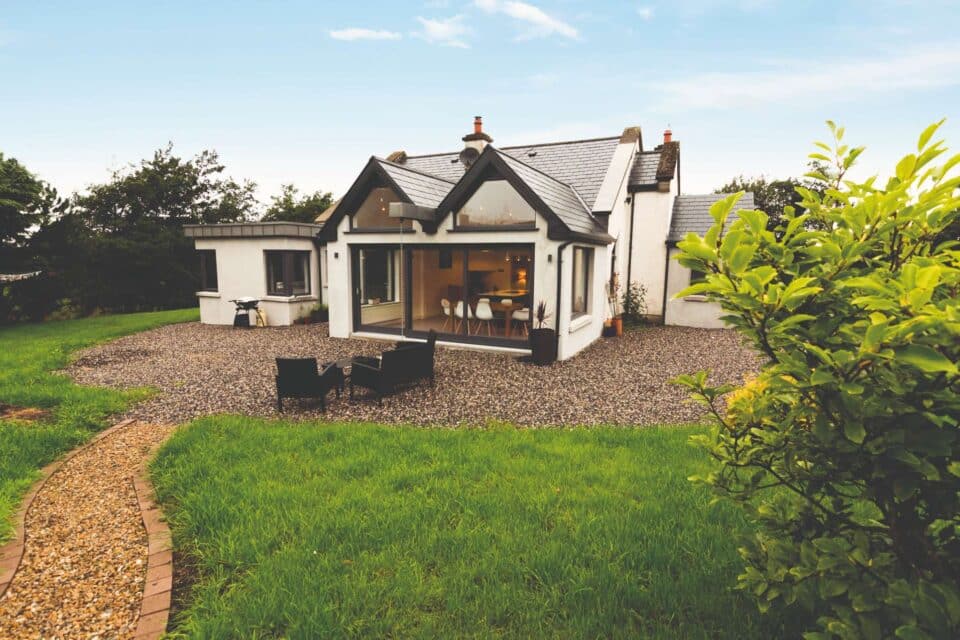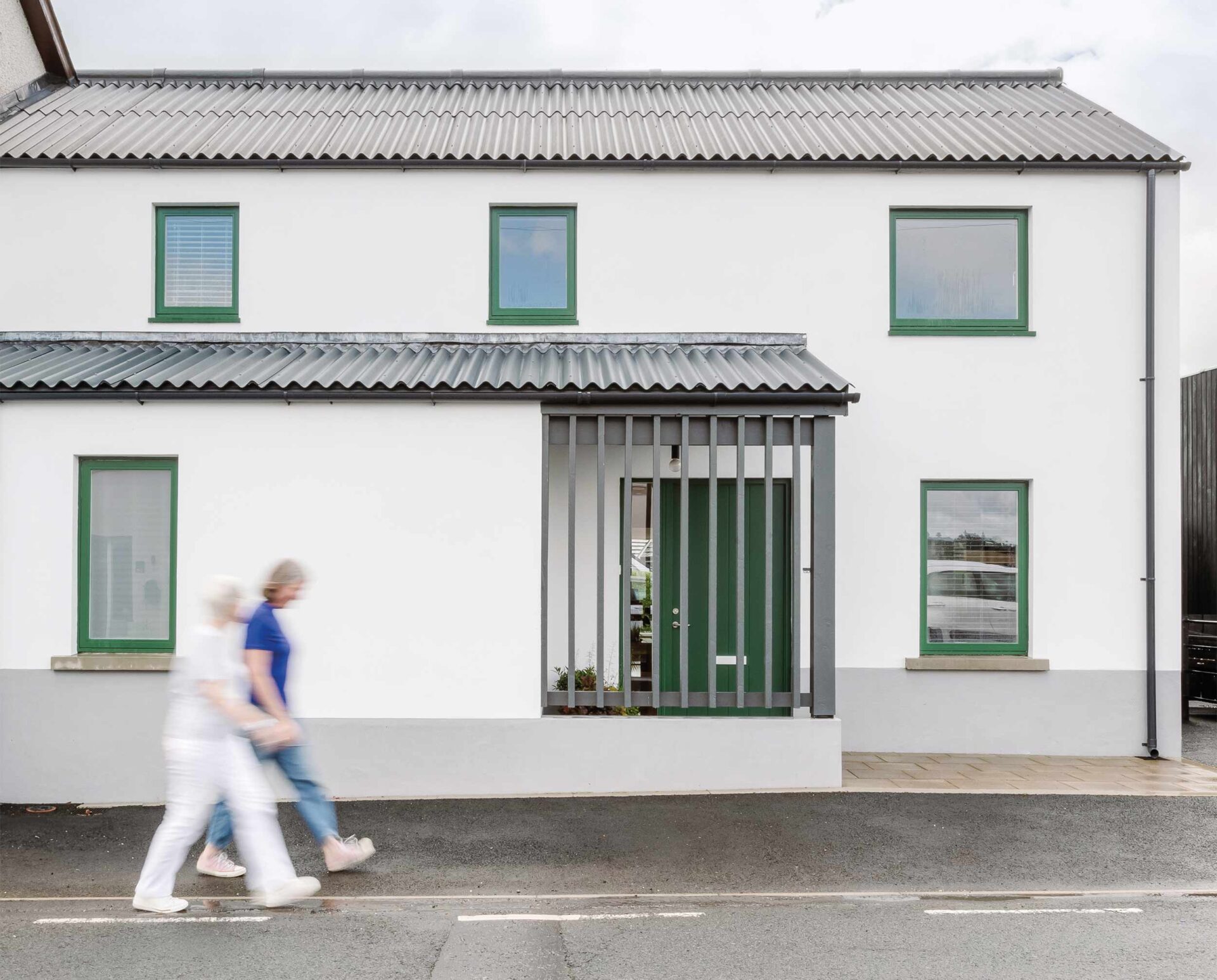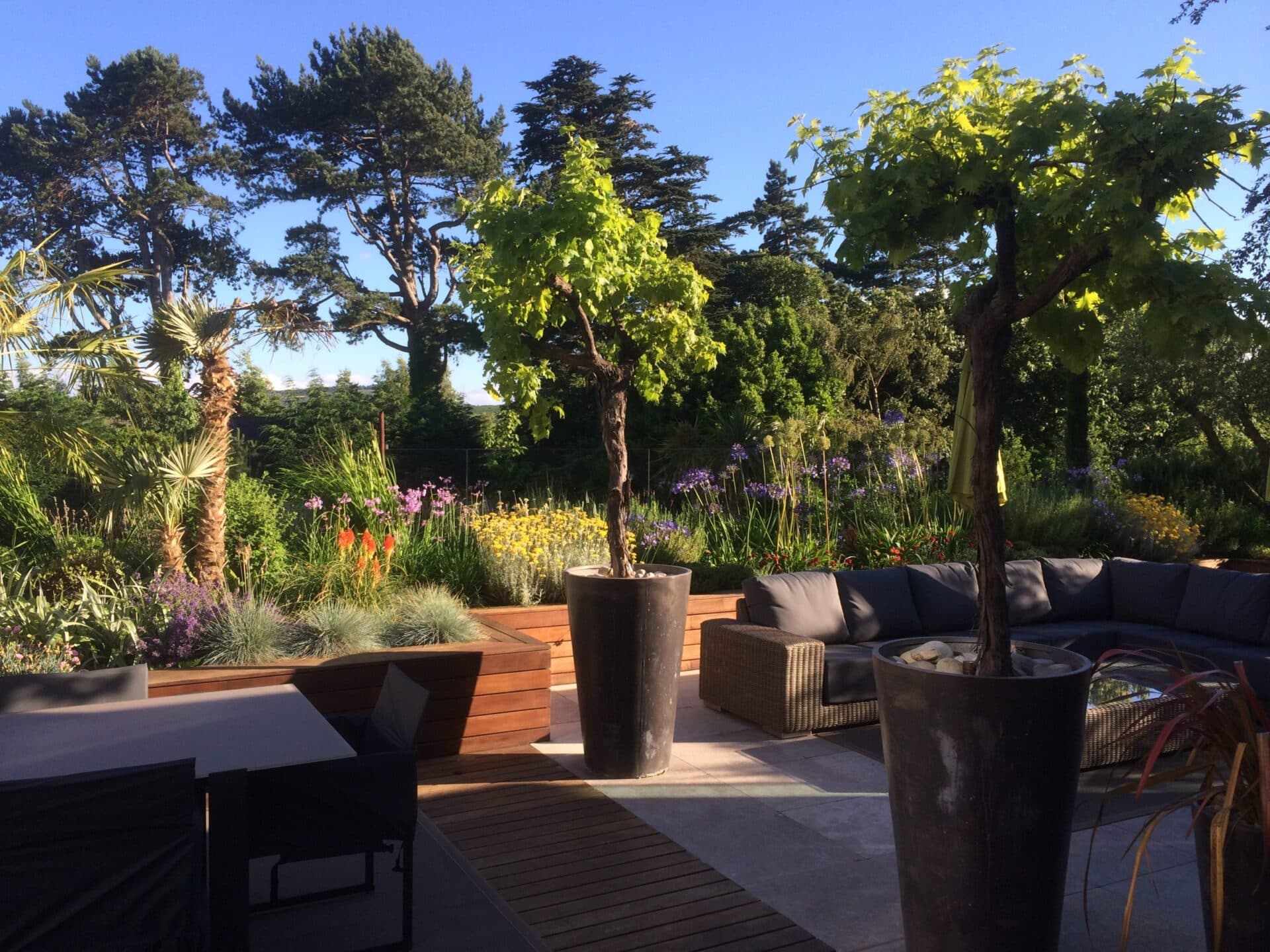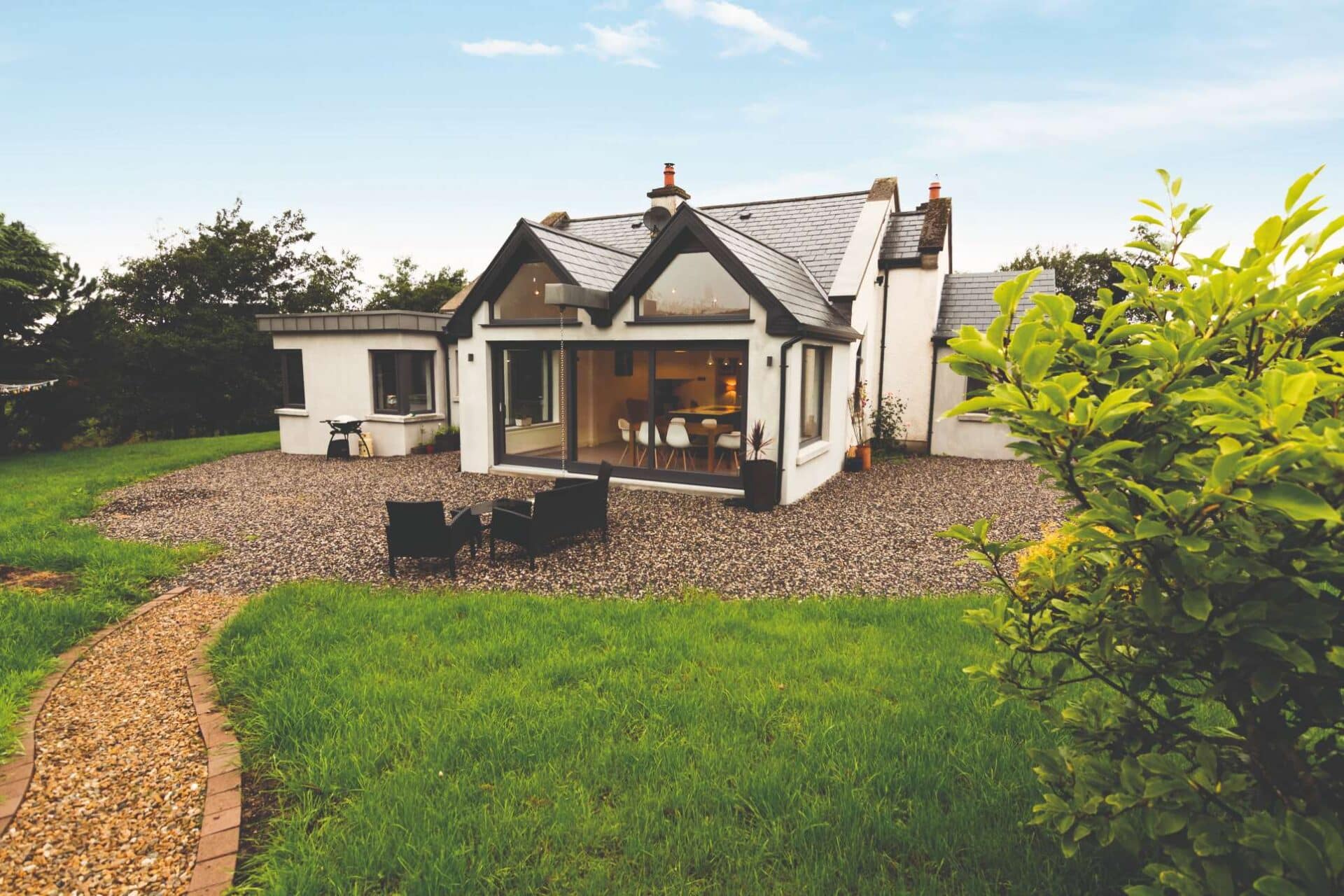For many self-builders, when the time comes to complete “the outside” it is usually more of a sign that the house project has reached completion than the start of a new phase in the build. In many cases this is because the landscaping budget has been sacrificed to pay for a cost overrun elsewhere.
Then, once life moves on from the main house build, a lack of time and energy often results in the garden being put on the long finger, to be completed months or years down the line when funds allow.
And yes, landscaping is expensive. All the more a reason to include it in your budget irrespective of when the works are actually done.
There are many elements to take into account when we look at the outdoor space. For one, it may well be that the house looks great set in the middle of a field, well back from the road, but there will be costs associated with getting a car from the road to the house – think driveway and kerbing. It may not be a direct cost of building the house, but it’s a necessary one all the same.
As with most aspects of selfbuilding, having a plan in place from the start will save you money, even if you must complete it in stages over a number of years. Leaving the garden as an afterthought will have consequences on the budget when the time comes to complete it, for example in the savings you could have made with preparing the ground when the digger was on site anyway, or avoidable rebuilding costs in the case of adding a patio in an unsuitable area.
There are many more cost elements to the garden than the ones listed below, including the need for retaining walls for a sloped site. What is important is to identify the present
and future needs of your specific project, and have a plan and the funds in place to complete them.
Driveways
For the majority of our grandparents, a driveway was nothing more than the road up to the house. Traditionally formed from local crushed stone, it was a 2m wide surface of two tracks
and grass down the middle.
The tracks were formed from the horse and cart from which the stone was unloaded. Practical and cost efficient, it remained the driveway of choice to many houses in Ireland.
As time went by, new methods and materials became available, and crushed stone was quickly replaced with tarmac.
Landscaping is expensive. All the more a reason to include it in your budget irrespective of
when the works are actually done…
In certain circumstances a concrete driveway was chosen due to the ease of installation however due to cost, it was unusual to see large concrete driveways.
In more recent times and with an ongoing push for more sustainable drainage systems, designed to avoid diverting rainwater quickly onto the land and causing flooding, there has been a move away from materials that do not allow for natural drainage of water like tarmac and concrete to materials like stone and permeable paving.
It is very common nowadays for a driveway to be finished in a coloured pebble which may be compacted into a fill substrate or even installed in a plastic stabilising product, also known as a geo grid. The cost of these systems very much depends on the size and type of stone, but is by far the most economical choice at less than €40 or £35 per sqm.
Paving will generally start at around €50 or £45 per sqm and work up from there depending again on the type of material as well as its size and thickness. Imprinted concrete is another popular option but it can only be used in areas where permeability is not mandated.
Paved areas
Many of the options available for paths and paved areas are similar to those for the driveway. Patios are common too, in the form of an area at the back of the property that you can step out onto from the back door, for the barbecue, for entertaining or simply to access the rear garden.
A footpath will generally go around the house perimeter to allow for access from front to back and to act as a buffer between the house and recreation areas. This helps reduce carrying dirt, pebbles and dampness into the property.
There is a wide range of materials available from coloured stone (<€40/£35 per sqm) to cobble lock (€50-85/£45-£70 per sqm) to granite paving (>€120/£100 per sqm) to simpler tarmac (<€40/£35 per sqm) or concrete (<€30/£25 per sqm).
It is not unusual to have a mixture of materials with more economical ones used in footpaths and the more expensive options in the main patio or terrace areas.
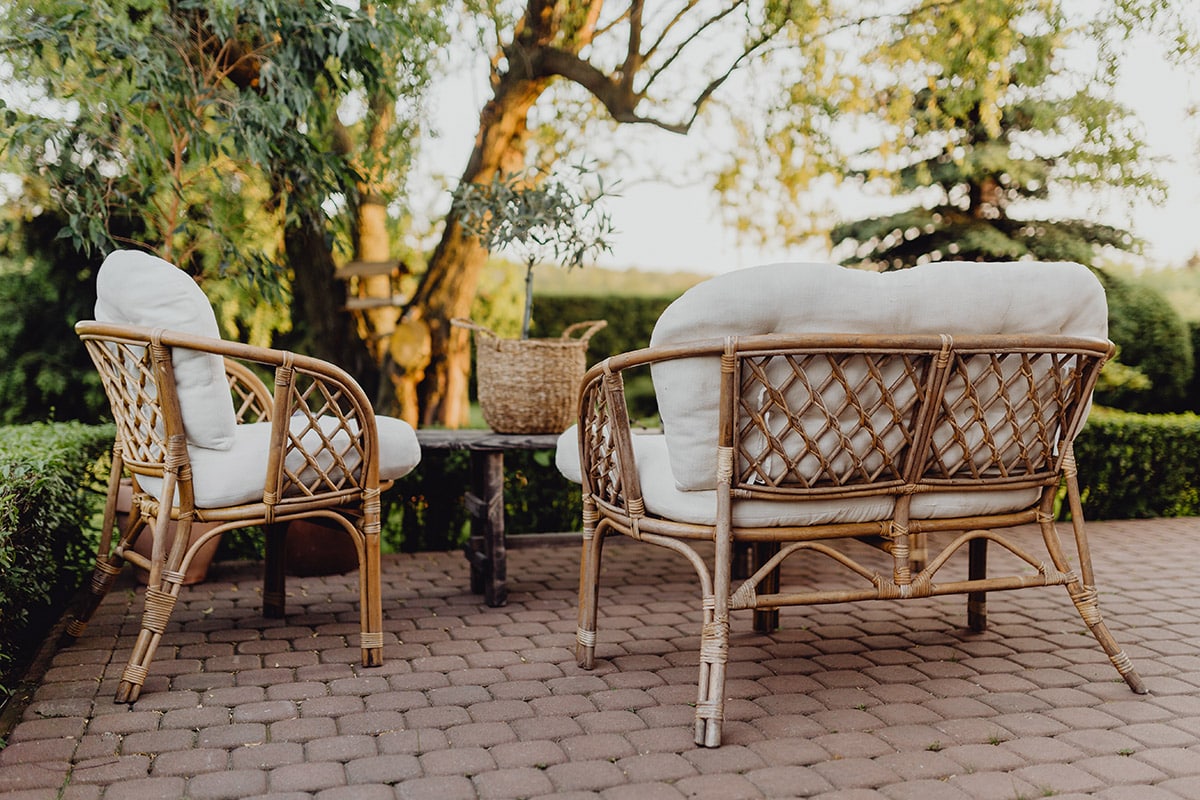
Kerbing
Any location where paving or a driveway meets a grassed area, or where a grassed area meets a plant bed or similar, some method of division is required. Often a forgotten item, it can be surprising how quickly the cost of something as simple as kerbing can be when hundreds of meters of driveway are accounted for.
It may be possible to have a simple grass edge between a plant bed and a grass area, but many gardens will commonly have a kerb stone in this location or indeed, a metal or treated timber edging, costing from a few euros/pounds per linear meter to granite kerbstone costing as much as €50-60/£50 per linear meter with the other options falling in between.
In a stone driveway, you will need permanent edging to keep the stones in place when cars drive onto it. The same logic applies for paved areas and footpaths.
Wastewater drainage
The drainage system for most houses, particularly self-builds, can be extensive and involve many metres of pipework. The location of the property and available connections will dictate a lot of the available options.
If your property can connect into a public or local town wastewater system then the connection point will dictate the level and layout of the pipework from the house.
When you take that installing a pipe, including digging, laying, backfilling in stone and sometimes concrete, will cost in the region of €50/£45 per linear meter of pipe, the cost can quickly add up. The cost of manholes, Armstrong Junctions, gullies and so forth must also be accounted for.
If a connection to a public system is not available, then a site specific treatment system will need to be designed, specified and installed. There are many regulations in respect to these systems including distance away from the house, distance from neighbouring houses and boundaries, distance away from water courses and the likes, that will all need to be taken into account.
The cost of an onsite wastewater treatment system can vary greatly depending on manufacturer and design, from €5k/£4k to well over €25k/£20k. If a percolation area is required, it will add to the cost.
In areas where there is paving, it is recommended that recessed covers are used on any of these items so the paving is not disrupted with an ugly manhole or AJ cover lid in an otherwise perfect finish.
Rainwater drainage
Pipework will be similar in cost to the wastewater pipe (often referred to as the foul pipe), but in addition there are requirements for gullies at each downpipe location from the roof, gullies from patios, driveways and so forth, as well as channel drainage connections and similar installations.
This water is then discharged to the public mains, with a licence to a watercourse, or to a soakway located somewhere on the site. A soakaway is a gravel or plastic crate construction, located underground which allows for the water to seep back into the ground at a controlled rate, thereby preventing the need for clean natural water to be transferred by pipes to treatment systems to be cleaned and redistributed when it was not contaminated to start with.
A soakaway is designed and sized depending on the amount of roof space of the dwelling but it is likely to cost €1,500/£1,200 to €2,000/£1,800 at a minimum to build. In addition, there is the cost of manholes, Armstrong Junctions, gullies, etc.
Planting
Planting is another area where costs can quickly accumulate. In some instances, it may even come as a requirement within your grant of planning permission, which means it will have to be done at a time when you will also be faced with house building costs.
This can take the form of replanting a boundary hedge in a native species or replanting a certain amount of tress in a particular season or to simply provide for a certain area of flowers beds around the property.
The cost of plants comes down to the age of the plant at the time of planting, and the coverage of the plant or density of plants per square meter. With plants also comes the need for topsoil and more importantly, fertilised topsoil.
Topsoil costs can vary greatly depending on location and quantity of load. It is important that you identify the location from which your topsoil is coming and that it is not simply earth that someone is trying to dispose of, as a proper lawn will not grow unless the correct soil is used.
It is not unusual for fully landscaped design to run into the tens of thousands just for the plants as individual mature trees will individually cost hundreds of euros/pounds.
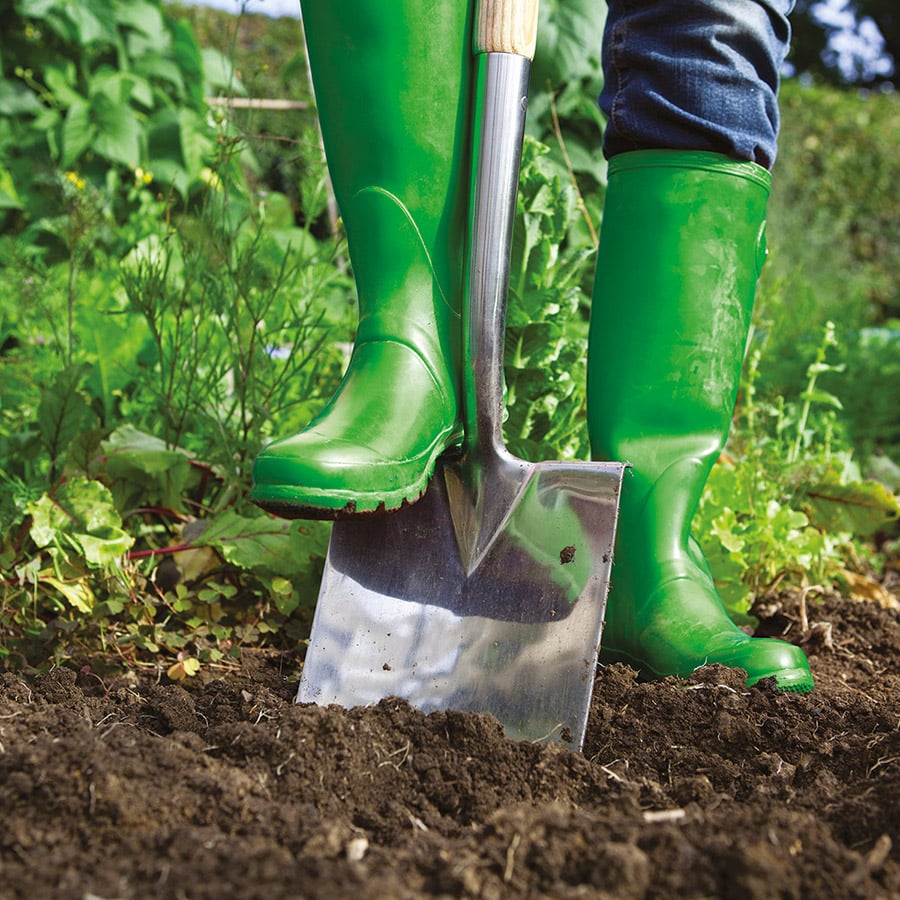
But for many, planting is nothing more than grass and the development of the front or rear garden. It must be noted however that getting a garden right is often a far more difficult task than one would imagine requiring care and knowledge to get right.
This may only happen on the third or fourth attempt, and after many hours of sacrifice. The correct topsoil, the correct drainage, the correct fall, the correct amount of stones and the correct type of seed are the requirements for a perfect garden.
In recent years the popularity of artificial surfaces has grown steadily and often areas of a garden will be set aside for artificial grass for play areas. This installation requires a stone substrate that is perfectly flat and drained onto which the grass, which is similar to a carpet, is laid.
Costs depend on the height of the grass (the pile) and quality of the product, but you can expect to pay between €30/£25 to €60/£55 per sqm for an installed product.
What’s included in the outdoor budget?

Groundwork is the term given to the preparation of land for future work. This includes all of the site preparations, including those relating to digging for foundations. Landscaping is the finishing, modifying, moulding or altering of the land.
In self-building terms these items generally refer to the formation and building of driveways, paths, paved areas, kerbing, drainage, planter beds, planting, gardens and any other garden features like ponds, ornaments, rockeries and the like.

